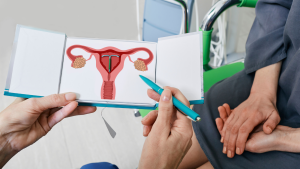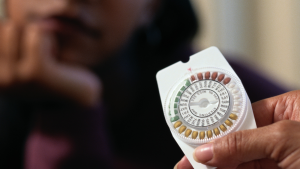
All About Condoms
Currently, condoms are the only widely available, proven method for reducing transmission of HIV and other sexually transmitted infections (STIs) during sex. Condoms work.

The vagina is often referred to as a “self-cleaning oven,” and rightly so. Less is more when it comes to keeping your vagina helpful. What’s important is to know what’s normal and when things may be off—and when to seek care.
What keeps a vagina healthy? Like many things in life, it’s all about balance. In a healthy vagina, there is a balance among many kinds of bacteria. That’s right—a healthy vagina is full of bacteria. Some kinds of bacteria are considered “good” while others are “bad.” Good bacteria help keep the vagina a little bit acidic. This keeps bad bacteria from growing too fast. Sometimes, though, the bad bacteria can take over and cause problems.
What can cause bacteria to get out of balance? Lots of things. Among them are antibiotics, douching, tight pants, vaginal products (sprays, lubricants, birth control devices), and pregnancy.
One sign that things are out of balance is discharge. Vaginal discharge isn’t always a problem. A healthy vagina does makes a discharge—slippery and clear or whitish when moist, may turn yellowish when dried, and has little odor. This healthy discharge may also be thicker during some times of the month. Unhealthy discharge is different. It often has an odd color (yellow, greenish, gray or thick white) and may also have strong, unpleasant odor.
Discharge isn’t the only sign to watch out for, though. Swelling, itching or burning in and around the vagina can also signal a problem. These symptoms are referred to as vaginitis, a broad term to describe different types of vaginal infections. Vaginitis is very common, and most women will have vaginitis at some point in their lives—possibly several times.
While vaginitis can be caused by a sexually transmitted infection, like trichomoniasis, it is more often the result of an imbalance of bacteria. Two of the more common types of vaginitis are yeast infections and bacterial vaginosis (BV).
While yeast infections and BV have some similar symptoms—discharge, redness and irritation, odor—they are different infections, and need to be treated differently. A yeast infection is caused by a fungus called candida, which (like bacteria) is normally found in the vagina. Specific bacteria in the vagina (lactobacillus) help prevent an overgrowth of yeast. But when that bacterial balance is upset, the result can be an overgrowth of yeast. BV is also caused by an imbalance—again, when the “bad” bacteria greatly outnumber the “good.”
Before you consider treatment for any vaginal problems, it’s important to know exactly what you’re dealing with. A healthcare provider can properly diagnose the cause of vaginitis and ensure you get the right treatment. While it can be tempting to self-diagnose and self-treat with over-the-counter products or natural remedies, many women misdiagnose the problem. In a survey conducted by ASHA, about 62% of women mistook BV for a yeast infection prior to diagnosis.
If you have symptoms of vaginitis, see your health care provider for a correct diagnosis. To help your provider find out what you have, prepare for the exam by following these tips:
The vagina is designed to keep itself clean with natural, healthy vaginal secretions. You can keep your vagina healthy with the same things that keep your whole body healthy—regular hygiene and a good diet. There are some basic dos and don’ts you can follow:
In this episode of the ASHA podcast Jenelle Marie Pierce, health educator and executive director of the TheSTIProject.com, shares her experiences in coping with BV and offers tips on talking with health care providers.

Currently, condoms are the only widely available, proven method for reducing transmission of HIV and other sexually transmitted infections (STIs) during sex. Condoms work.

There’s potential good news in gonorrhea prevention as a series of studies suggests that certain meningococcal B (MenB) vaccines can reduce the risk of gonorrhea.

There is new guidance on pain management for IUD insertion and acknowledgement that providers often underestimate the pain patients feel during their procedures.

Non-hormonal contraceptive methods fall into a few categories. These include barrier methods and surgical options.

There’s new research to suggest that the birth control pill can protect female athletes from ACL tears which is one of the most common knee injuries. While this may sound far-fetched, the science behind it is very interesting.

A new study of more than 200,000 women found that women who had ever taken the pill had a 26% lower risk of ovarian cancer.

Many methods of birth control that are available today rely on hormones like those that our bodies make naturally. Hormonal methods come in many different forms—from pills to patches to shots—but all of them essentially work the same way.

Anyone who is having penis-in-vagina sex runs the risk of getting pregnant every time they have sex. Even if it’s your first time. Even if you have your period. Even if it’s a full moon and Mercury is in retrograde.
ASHA believes that all people have the right to the information and services that will help them to have optimum sexual health. We envision a time when stigma is no longer associated with sexual health and our nation is united in its belief that sexuality is a normal, healthy, and positive aspect of human life.
ABOUT
GET INVOLVED
ASHA WEBSITES
GET HELP
© 2025 American Sexual Health Association